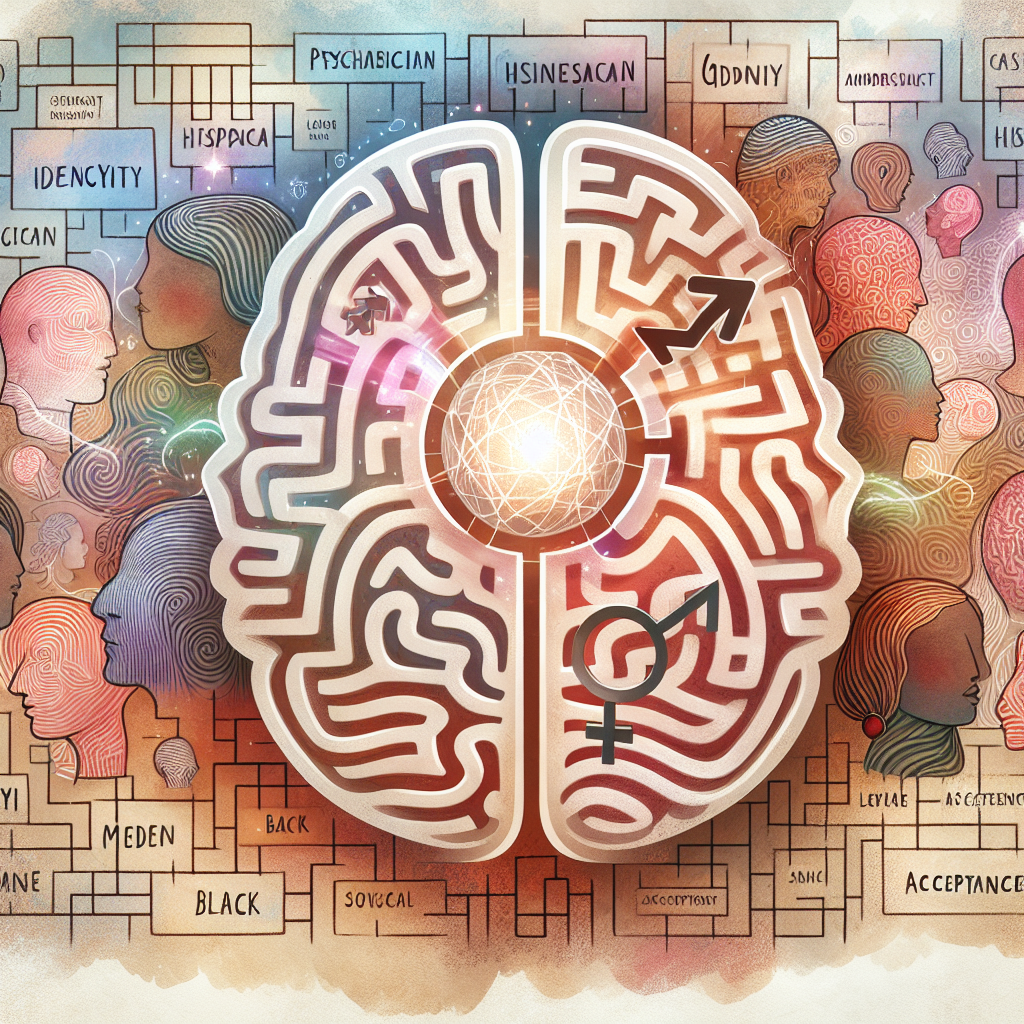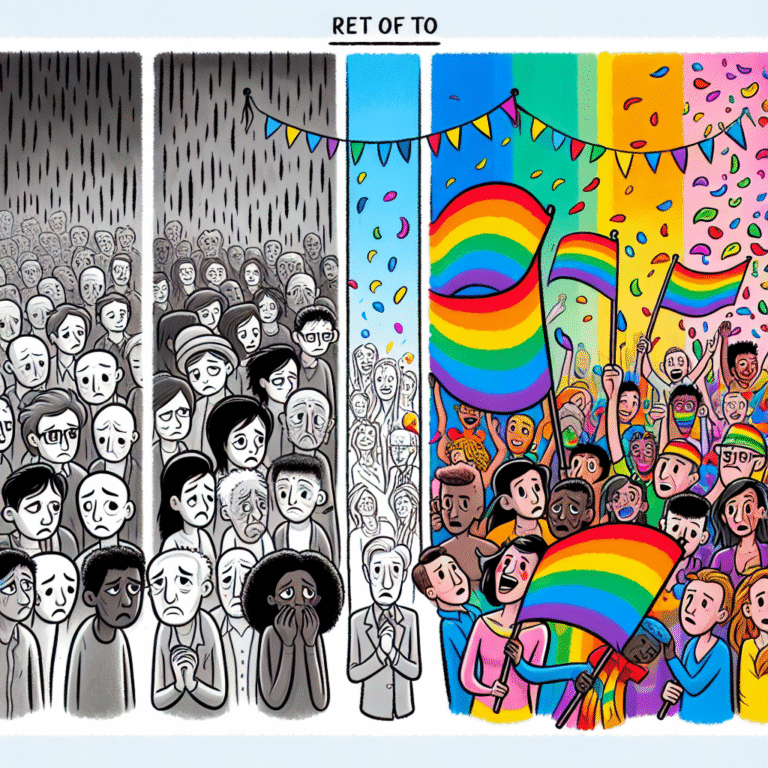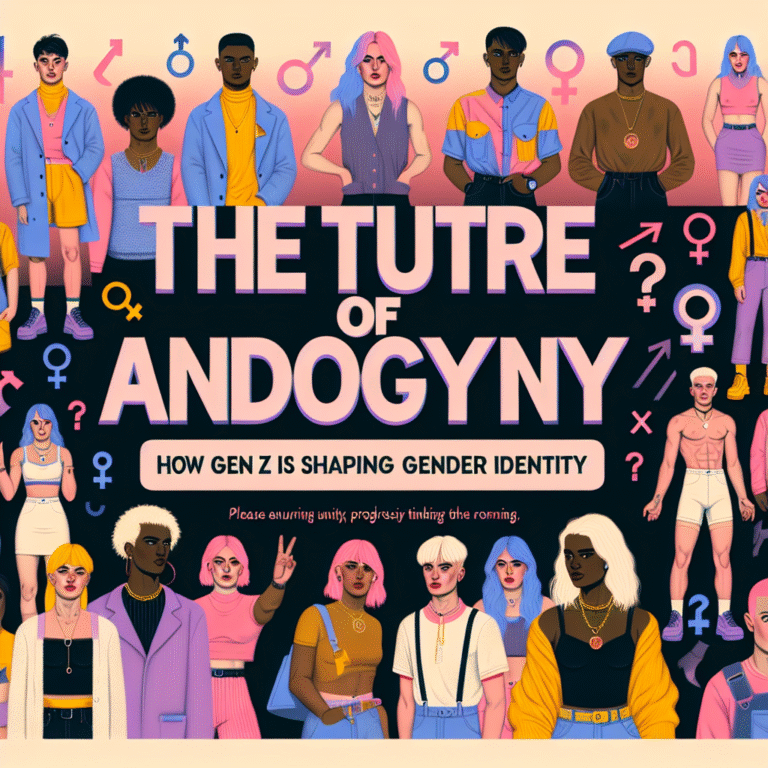
Introduction
In our evolving world, shapes, sizes, and identities seem less defined than ever before. The concept of androgyny—the blending of masculine and feminine traits—has emerged not merely as a fashion statement but as a profound exploration of self. When we discuss The Psychological Impact of Androgyny: Navigating Identity and Acceptance, we enter a nuanced dialogue about identity. How does embodying an androgynous identity affect mental health? How do societal norms shape acceptance? This article unpacks these complex questions, weaving together insights that illustrate the significant implications of androgyny on personal identity and societal acceptance.
Understanding Androgyny: A Brief Overview
What is Androgyny?
Androgyny, as defined within psychological and sociological contexts, refers to the combination of male and female characteristics in an individual. This can manifest in various ways, including physical appearance, behavior, and self-identification. Historically, androgyny has held a variety of meanings depending on cultural contexts and periods of history.
The Cultural Historical Context
To appreciate the current psychological implications of androgyny, we must first touch on its historical context. In various cultures—ranging from the Two-Spirit identities among Indigenous peoples to the gender-bending aesthetics of the 1970s glam rock era—society has long grappled with concepts beyond the binary. Understanding these cultural distinctions opens the door to recognizing the broader implications of gender fluidity today.
The Psychological Impact of Androgyny
Identity Formation and Self-Concept
Case Study: Alex’s Journey
Alex, a 26-year-old graphic designer, grew up feeling disconnected from traditional gender roles. Through high school, this disconnection led to anxiety and depression, stemming from the friction between Alex’s internal sense of identity and external societal expectations. Eventually, Alex embraced an androgynous style and identity.
Analysis: Alex’s experience highlights the importance of self-acceptance. When Alex redefined their self-concept to include androgynous traits, the pressure diminished, allowing for a healthier mental state.
Navigating Duality: The Role of Gender Norms
The psychological ramifications of androgyny often pivot around the individual’s ability to navigate societal constraints. Those identifying as androgynous frequently confront preconceived notions rooted deeply in traditional gender norms.
A study conducted by the American Psychological Association suggests that individuals who embrace a non-binary identity experience fewer instances of anxiety when they receive support in their communities. Thus, The Psychological Impact of Androgyny: Navigating Identity and Acceptance is notably influenced by external acceptance and validation.
Mental Health Outcomes
Emotional Well-Being
Research indicates a pressing correlation between gender identity and mental health. In particular, individuals who identify as androgynous report varying levels of emotional well-being. A comprehensive survey analyzing the mental health statuses of gender-diverse individuals indicated that androgynous participants often experience lower levels of suicidal ideation compared to strictly gender-conforming peers.
- Emotional Well-Being Indexed Table:
| Identity Type | Average Emotional Well-Being Score |
|---|---|
| Androgynous | 78% |
| Feminine | 72% |
| Masculine | 70% |
| Non-binary | 75% |
This table illustrates that embracing androgyny can serve as a protective factor against emotional distress, which significantly enriches the discourse surrounding The Psychological Impact of Androgyny: Navigating Identity and Acceptance.
Acceptance in Society
Community Support Systems
Another critical aspect of androgyny is the role of community acceptance in fostering a positive identity. Support networks, whether through friends, family, or online communities, can make an immense difference.
Case Study: Jordan and Online Spaces
Jordan, a student, found solace in online communities embracing androgyny. These virtual spaces allowed Jordan to explore their identity without the constraints often found in their physical world.
Analysis: Online communities can buffer against societal rejection, highlighting a pathway to acceptance and validation. Consequently, The Psychological Impact of Androgyny: Navigating Identity and Acceptance reflects how supportive environments can enhance mental health outcomes.
Societal Perceptions and Stereotypes
The Influence of Media
Media representation plays a crucial role in shaping societal views on androgyny. From the fashion industry to cinema, the portrayal of androgynous individuals can directly influence perceptions.
- Media Representation Chart:
| Year | Notable Androgynous Figures | Public Acceptance Index (%) |
|---|---|---|
| 2010 | Jared Leto, Tilda Swinton | 55% |
| 2015 | Ruby Rose, Amandla Stenberg | 75% |
| 2020 | Billie Eilish, Sam Smith | 85% |
The increasing acceptance evident in the chart reveals a gradual shift towards broader societal recognition, illustrating the significance of representation in The Psychological Impact of Androgyny: Navigating Identity and Acceptance.
The Intersection of Androgyny and Intersectionality
Gender, Race, and Class
Androgyny does not exist in a vacuum; it interacts with various factors, including race, socioeconomic status, and culture. Exploring these intersections can yield insights into how different individuals experience identity and acceptance.
Case Study: Maya’s Multi-Dimensional Identity
Maya, a Black androgynous activist, navigates unique challenges that intertwine race and gender. Despite societal challenges, Maya has harnessed their voice to advocate for broader acceptance, highlighting the intersections that complicate the narrative surrounding androgyny.
Analysis: Maya’s story exemplifies how intersecting identities profoundly influence personal experiences of acceptance. Therefore, acknowledging these intersections is critical in understanding The Psychological Impact of Androgyny: Navigating Identity and Acceptance.
Conclusion
The journey of navigating identity through androgyny is a complex yet empowering endeavor. As we explore The Psychological Impact of Androgyny: Navigating Identity and Acceptance, it becomes clear that acceptance—both self-acceptance and societal acceptance—provides a significant foundation for emotional well-being. By fostering supportive environments and encouraging diverse representations, we can enhance the mental health outcomes for those who identify as androgynous.
Ultimately, embracing androgyny is not just about defying traditional gender norms but also celebrating the rich tapestry of human identity. Let us champion acceptance and support individuals on their unique journeys, reminding ourselves that every narrative matters.
FAQs
1. What is androgyny?
Androgyny refers to the blending of both masculine and feminine traits in an individual. This can manifest through appearance, behavior, and self-identification.
2. How does androgyny impact mental health?
Individuals who identify as androgynous often experience varying levels of emotional well-being, with many reporting lower levels of anxiety and suicidal ideation, especially when supported by their community.
3. Can society’s acceptance influence an individual’s identity?
Yes, acceptance from family, friends, and wider communities profoundly shapes how individuals navigate their identities, impacting their mental health and self-perception.
4. What is the role of media representation in androgyny?
Positive representation of androgynous individuals in the media can play a crucial role in shaping public perception and acceptance, promoting understanding and reducing stigma.
5. How does intersectionality affect androgynous experiences?
Intersectionality explores how overlapping social identities—including race, gender, and class—interact and shape unique experiences of acceptance and identity. Each individual’s journey is distinct based on these intersecting factors.
This in-depth exploration of The Psychological Impact of Androgyny: Navigating Identity and Acceptance provides a comprehensive look at the multi-dimensional nature of androgyny. It urges readers to advocate for acceptance, emphasizing that every journey towards self-discovery is valid and worthy of celebration.















